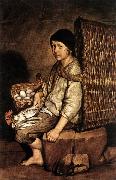huile sur la toile, vraie saveur de vieux maîtres.

|
|
|||
| Italian Painter, 1698-1767 | |||
|
|
|||

| |||
|
|
|||
|
|
|||

| |||
|
|
|||
|
|
|||

| |||
|
|
|||
|
|
|||

| |||
|
|
|||
|
|
|||

| |||
|
|
|||
|
|
|||
| Artiste précédent Artiste prochain | |||










